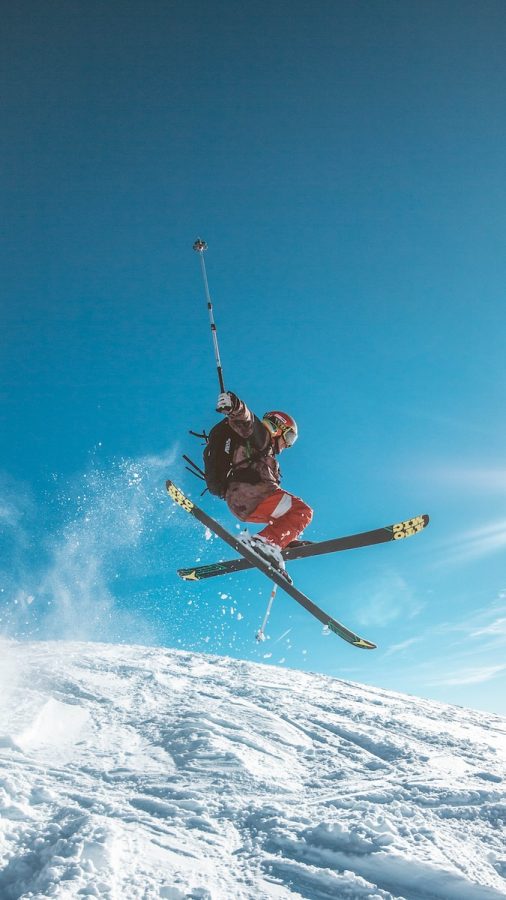Different Types Of Skiing
The different categories and classifications of skiing
Skiers of all abilities can benefit from learning the physics of skiing because it enables them to recognize the fundamental physical concepts that allow them to execute specific movements correctly from a performance standpoint. Understanding some of the physics theory underlying skiing can make sense of the mechanics involved in addition to having an intuitive understanding gained from practice, which is especially helpful for individuals who are just beginning out. The physics of the many styles of skiing will be covered.
Downhill Skiing
Alpine skiing is another name for downhill skiing. It requires moving quickly and at a high speed down an incline. By converting gravitational potential energy, the skier accelerates by transforming the potential energy of gravity into kinetic energy. A skier therefore travels quicker the further he skis down a hill.
In downhill skiing competitions, it is important to complete the course as quickly as possible while avoiding hazards and tight turns. Understanding how this is accomplished requires a thorough understanding of the physics. A skier increases his speed by reducing the amount of resistance to motion, including snow and air resistance. By decreasing his projected frontal area, a skier can reduce his drag (air resistance). He accomplishes this by crouching, which enhances his ability to maintain balance while also reducing the drag force, which operates in the opposite direction of his velocity and slows him down.
Skiers who go “off-piste,” or outside the bounds of a ski resort, may use snowmobiles, helicopters, or snowcats to get to the summit of a slope. Backcountry skiers may employ specialized gear with a free-heel mode that includes “sticky” skins on the bottoms of the skis to prevent them from sliding backwards during a climb, then locks the heel and removes the skins for their descent.
Since 1936, alpine ski competitions have been held during the Winter Olympics. In Norway, the first modern slalom tournament was held in Oslo, Norway in 1886.
The highest speed on the slope can be achieved by skiing along the fall line. Skiers who are moving across the slope rather than down it will move more slowly since their skis are positioned perpendicular to the fall line. By altering the angle of motion in reference to the fall line and skiing across the hill rather than down it, one can regulate the speed of descent down any given hill.
In order to turn the skis smoothly from one direction to another, turns are a key component of downhill skiing technique. The skier can also utilize the same maneuvers to turn the ski in the opposite direction of motion, creating sliding forces between the skis and snow that slow the fall even further. With proper technique, you may smoothly transition from one downhill angle to the next, changing the angle as necessary to match changes in the run’s steepness. Instead of turns followed by straight parts, this is a continuous series of S’s.
Cross Country Skiing
Most people often picture downhill or alpine skiing when they think about snow skiing. Cross-country skiing, however, is the oldest and, in the opinion of its practitioners, the best kind of skiing.
In alpine skiing, the toe and heel of the ski boot are secured to the ski, and the skier typically uses a chairlift to reach the top of a steep course before skiing down it. Cross-country skiing, however, allows the skier to raise his or her heel with each step to simulate a normal walking action because the boot heel is not tied to the ski. Skiers can move upward because this allows them to traverse a range of terrains without losing momentum.
Ski touring, XC skiing, or Nordic skiing are other names for cross-country skiing, which has been around for a while. In reality, a 4,000-year-old rock engraving in Norway clearly depicts a man standing on very long skis with upward-curving fronts. Cross-country skiing evolved from a practical means of transportation to a pastime around a thousand years ago, and it later spread to other areas of the world as a fun way to spend a snowy day. However, cross-country skis are still a popular mode of transportation for individuals who live in polar regions.
You probably already know how effective cross-country skiing is as an aerobic workout if you have a Nordic trainer at home. The coordinated use of the arms and legs may be all that a casual viewer notices, but practically every other body part—including the abs, buttocks, back, and hip flexors—is also being worked.
Cross-country skiing is typically done in a remote area or on a well-traveled path. Instead of having to deal with hordes of skiers at an overcrowded resort, skiing allows participants to interact with nature and enter a contemplative state.
But despite how simple it may seem, there are several considerations when moving across snowy terrain.
Related Stories:
https://www.rei.com/learn/expert-advice/best-skis.html
https://www.rei.com/learn/expert-advice/downhill-skis.html
https://www.rei.com/learn/expert-advice/what-to-wear-skiing-and-snowboarding.html
https://www.rei.com/learn/expert-advice/ski-rocker-technology.html
https://www.rei.com/learn/expert-advice/terrain-park-etiquette.html
Take Action:
Here are some sites where you can buy skiing gear.











